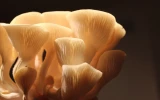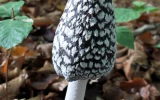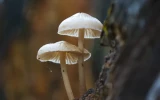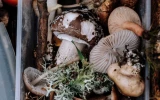Oyster Mushrooms Turning Brown: What It Means
Oyster mushrooms can turn brown, which can be concerning for mushroom growers. While browning can be a sign of distress, it doesn’t necessarily mean that your mushrooms are doomed. In this article, we will explore what it means when your oyster mushrooms turn brown.
Oyster mushrooms turning brown can indicate overmaturity, a lack of moisture, bacterial or fungal infections, sunburn, or chemical exposure. Oyster mushrooms turning brown can be an indication of various issues with mushroom growth, and the exact reason depends on the growth conditions and the stage of development.
Let's get to know further the reasons your oyster mushrooms are turning brown. Keep reading to learn the steps you can take to fix the problem.
Summary
- If the mushrooms are grown outdoors, they should be grown in a shaded area, or under a canopy or other protective cover.
- To prevent chemical exposure, it's important to use clean and organic growing practices, avoiding the use of pesticides and herbicides whenever possible.
- It's important to identify the underlying cause of browning and take appropriate action to ensure healthy and safe mushroom growth.
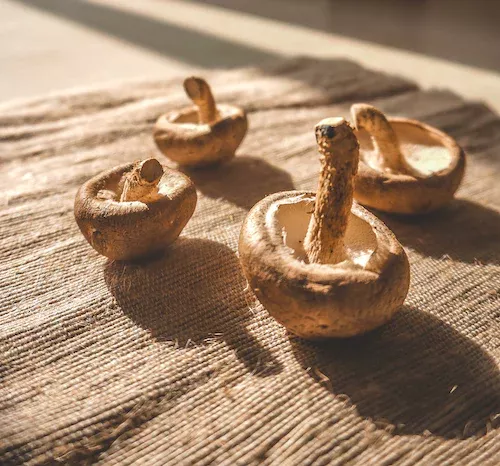
On this page:
Causes of Oyster Mushrooms Turning Brown
Here are a few possible reasons why your oyster mushrooms might be turning brown:
Overmaturity of oyster mushrooms can lead to them turning brown
Oyster mushrooms are typically harvested when they are young and have a pale color. If left to mature for too long, they will start to turn brown and lose their texture and flavor. As they continue to mature, they may turn brown and lose their texture, becoming tough and leathery.
So, if you notice that your oyster mushrooms have turned brown and are past their peak, it's likely that they have matured too much.
Oyster mushrooms starting to turn brown when drying out
When mushrooms begin to dry out, they lose moisture, which can cause them to become discolored and change texture. Oyster mushrooms are particularly susceptible to browning when they are drying out because they contain a lot of water, which is essential for their growth and development.
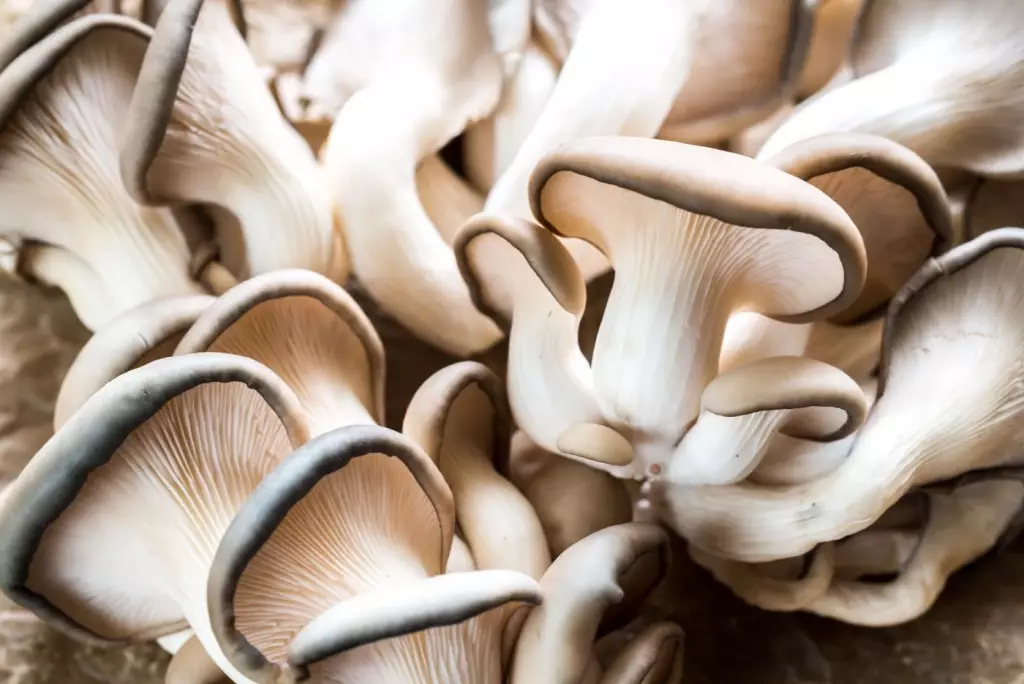
If the humidity levels are too low or if the mushrooms are not being misted regularly during the drying process, they can dry out too quickly and start to turn brown.
Brown oyster mushrooms may be infected by bacteria or fungi
Bacterial and fungal infections are a common cause of discoloration in mushrooms, including oyster mushrooms. These infections can be caused by a variety of microorganisms that can infect the mushrooms through wounds or openings on their surface. When infected, the mushrooms may show signs of discoloration, such as turning brown or black.
In addition to discoloration, bacterial and fungal infections can cause the mushrooms to develop a slimy texture, emit a foul odor, or show signs of decay. If you suspect that your oyster mushrooms have become infected with bacteria or fungi, it's best to discard them to avoid the risk of food poisoning or other health issues.
Oyster mushroom turning brown might be caused by a sunburn
Sunburn in mushrooms is caused by exposure to direct sunlight or other sources of ultraviolet (UV) radiation. UV radiation can damage the pigments in the mushrooms, causing them to change color and become discolored, including turning brown.
Oyster mushrooms are particularly susceptible to sunburn because they have thin, delicate flesh that can be easily damaged by prolonged exposure to sunlight. It's worth noting that while sunburn may cause discoloration in oyster mushrooms, it's typically not a serious problem and doesn't affect the safety or quality of the mushrooms.
However, if the mushrooms have been sunburned and have started to spoil or show other signs of deterioration, they should be discarded.
Brown oyster mushrooms might be exposed to chemical exposure
If the mushrooms have been exposed to chemicals such as pesticides or herbicides, they may turn brown as a result. Chemical exposure can happen during the growth process, for example, if the mushrooms are grown in soil or substrate that has been treated with chemicals.
It can also happen during storage or transportation if the mushrooms come into contact with chemical residues from other products or materials. If you suspect that your oyster mushrooms have been exposed to chemicals and are showing signs of damage or discoloration, it's best to discard them to avoid any potential health risks.
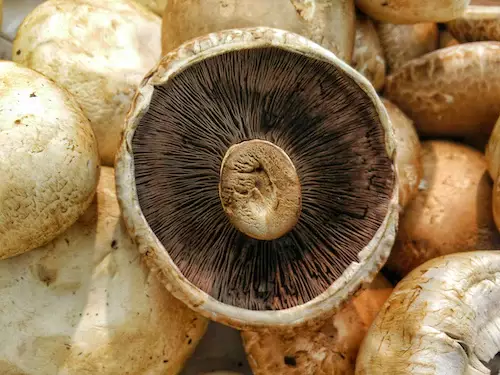
How To Prevent Oyster Mushrooms From Browning
Here are some tips to prevent oyster mushrooms from browning:
Harvest the mushrooms at the right time
Oyster mushrooms are at their peak flavor and texture when they are young and have a pale color. Harvest them before they become too mature and start to lose moisture.
Handle the mushrooms gently
Oyster mushrooms are delicate and can be easily damaged during handling. Avoid squeezing or pressing on the mushrooms, which can cause them to bruise and start to discolor.
Store the mushrooms properly
Oyster mushrooms should be stored in a cool and humid environment, ideally in a refrigerator or a cooler. Keep them in a clean and airtight container, and avoid stacking them on top of each other.
Mist the mushrooms regularly
Oyster mushrooms need to be kept moist to maintain their texture and flavor. Mist them regularly with water or a spray bottle to prevent them from drying out.
Avoid exposure to direct sunlight
Oyster mushrooms are susceptible to sunburn, which can cause them to turn brown. Keep them out of direct sunlight and store them in a cool, dark place.
Practice good hygiene on the mushrooms
To prevent bacterial and fungal infections, wash your hands and equipment thoroughly before handling the mushrooms. Use clean and sanitized containers for storage, and avoid storing them with other types of produce.
By following these tips, you can help prevent your oyster mushrooms from turning brown and keep them fresh and flavorful for longer.
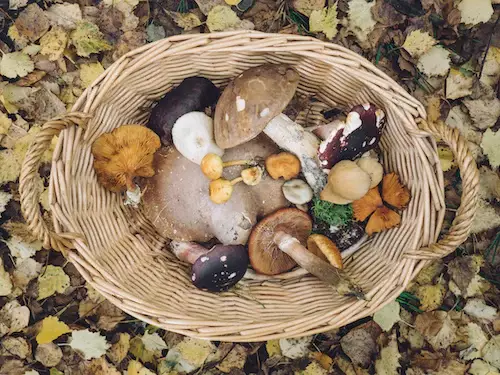
What To Do When Your Oyster Mushrooms Are Turning Brown
If you have brown oyster mushrooms, below are some actions that are advised. By following these actions, you can help salvage your brown oyster mushrooms and ensure that they are safe to eat. However, if the mushrooms show signs of spoilage or have a strong odor or slimy texture, it's best to err on the side of caution and discard them to avoid any potential health risks.
1. Inspect the mushrooms
Check the mushrooms carefully for signs of spoilage, such as a slimy texture or a foul odor. If the mushrooms are severely discolored or show other signs of decay, it's best to discard them to avoid the risk of food poisoning or other health issues.
2. Trim off any brown parts
If the mushrooms are only slightly discolored, you can trim off the brown parts using a clean knife or scissors. This can help salvage the mushrooms and remove any damaged or discolored areas.
3. Soak the mushrooms in water
If the mushrooms are only slightly discolored, you can soak them in water for a few minutes to help remove any dirt or debris that may be contributing to the discoloration. After soaking, rinse them thoroughly and pat them dry with a clean cloth or paper towel.
4. Use the mushrooms in cooking
If the mushrooms are still fresh and have only minor discoloration, you can still use them in cooking. Brown oyster mushrooms can be cooked in a variety of ways, such as by sautéing, stir-frying, or grilling. The cooking process can help to mask any slight discoloration and bring out the flavors of the mushrooms.
